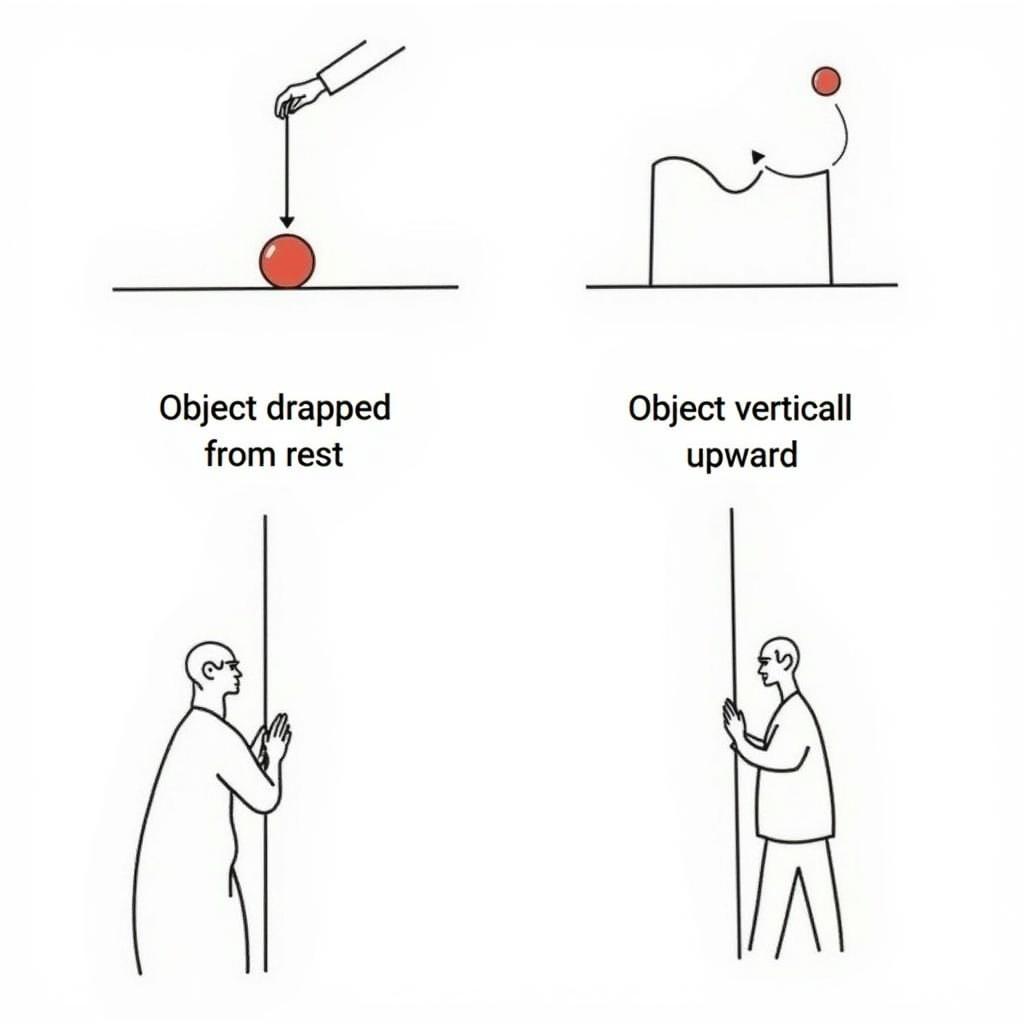Free fall kinematics delves into the captivating world of objects in motion under the sole influence of gravity. Whether it’s an apple plummeting from a tree or a skydiver gracefully descending through the air, understanding the principles of free fall allows us to predict and analyze their motion with precision. This comprehensive worksheet will equip you with the knowledge and tools to tackle any free fall problem, unraveling the secrets behind objects in free fall.
Unveiling the Concepts: What is Free Fall?
Before diving into the equations and calculations, let’s establish a clear understanding of free fall motion. In essence, free fall describes the motion of an object when the only force acting upon it is gravity. This implies neglecting air resistance and assuming a constant gravitational acceleration, commonly denoted as ‘g’ with a value of approximately 9.8 m/s² near the Earth’s surface.
Key Characteristics of Free Fall:
- Constant Acceleration: Objects in free fall experience a constant downward acceleration due to gravity.
- Neglecting Air Resistance: For simplicity, we disregard air resistance, assuming that gravity is the sole force influencing the object’s motion.
- Downward Direction: The motion of a freely falling object is always directed downwards towards the center of the Earth.
Essential Equations for Free Fall Kinematics:
To analyze free fall scenarios effectively, we rely on a fundamental set of equations. These equations connect displacement, velocity, acceleration, and time, enabling us to calculate unknown variables:
-
Displacement Equation:
Δy = v₀t + (1/2)gt²Where:
- Δy: Displacement (change in vertical position)
- v₀: Initial velocity
- t: Time
- g: Acceleration due to gravity
-
Velocity Equation:
v = v₀ + gtWhere:
- v: Final velocity
- v₀: Initial velocity
- g: Acceleration due to gravity
- t: Time
-
Time-Independent Equation:
v² = v₀² + 2gΔyWhere:
- v: Final velocity
- v₀: Initial velocity
- g: Acceleration due to gravity
- Δy: Displacement
Solving Free Fall Problems: A Step-by-Step Guide
Now that we’re equipped with the necessary equations let’s outline a structured approach to tackle free fall problems confidently:
-
Identify Knowns and Unknowns: Begin by carefully reading the problem statement and listing the given information. Determine the variable you are tasked with finding.
-
Choose the Appropriate Equation: Select the kinematic equation that aligns with the known and unknown variables in the problem.
-
Plug in the Values: Substitute the known values into the chosen equation, ensuring unit consistency.
-
Solve for the Unknown: Algebraically manipulate the equation to solve for the unknown variable.
-
Interpret the Result: After obtaining the numerical answer, interpret its meaning in the context of the problem. Consider units and assess whether the result aligns with your understanding of free fall motion.
Common Free Fall Scenarios:
Let’s explore some frequently encountered free fall situations:
1. Object Dropped from Rest:
When an object is released from rest, its initial velocity (v₀) is zero.
Example: A ball is dropped from a height of 20 meters. Calculate the time it takes to reach the ground.
Solution:
Using the displacement equation:
Δy = v₀t + (1/2)gt²Since the ball is dropped from rest, v₀ = 0. Plugging in the values:
-20 m = (0)t + (1/2)(-9.8 m/s²)t²Solving for t, we get t = 2.02 seconds.
2. Object Thrown Vertically Upward:
When an object is launched vertically, its initial velocity is non-zero. The object will rise until its velocity reaches zero at its highest point, after which it falls freely downward.
Example: A stone is thrown vertically upward with an initial velocity of 15 m/s. Determine the maximum height it reaches.
Solution:
At the maximum height, the final velocity (v) is zero. Using the time-independent equation:
v² = v₀² + 2gΔyPlugging in the values:
0² = (15 m/s)² + 2(-9.8 m/s²)ΔySolving for Δy, we get Δy = 11.48 meters.
 Common Free Fall Scenarios Illustrations
Common Free Fall Scenarios Illustrations
Conclusion:
Mastering free fall kinematics empowers us to analyze and predict the motion of objects under the influence of gravity. By understanding the fundamental concepts, essential equations, and a systematic problem-solving approach, you can confidently tackle free fall problems across various scenarios. Remember to carefully consider the initial conditions, choose the appropriate equation, and interpret your results accurately. Now, equipped with this knowledge, go forth and explore the fascinating world of free fall physics!